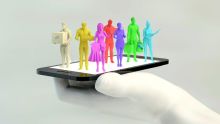How to help marginalised groups most badly hit by COVID-19

The health of a society can only be as robust as the health of its most vulnerable members — this has become clearer than ever during the COVID-19 pandemic, when the heightened susceptibility of marginalised groups to the coronavirus has life-or-death implications for the global community.
For instance, the New York Times reports that research suggests those in lower economic strata are not just likelier to catch the disease, but also likelier to die from it.
There are many reasons for this, says Paulin Straughan, Professor of Sociology (Practice) and Dean of Students at Singapore Management University. “They could lack information on self-care and preventive health, have limited access to resources, and a differential access to a healthy lifestyle.”
Inequality could also mean higher risk factors in the form of cramped living quarters and neighbourhoods where social distancing is not possible; and/or jobs that require exposure to large groups of people, which employees feel pressured to return to despite a lack of safety precautions, simply to ensure they can keep their livelihoods.
Other groups require society’s care and attention as well. The elderly, particularly seniors who are not digitally savvy and living alone, with no support system, not only have a higher risk of getting infectious diseases because they tend to have lower immunity, but also need help to access public health information and services.
“We also worry about front-line staff because they are in essential services and have to continue working while many of us can work from home,” adds Prof Straughan. “We worry about those who are not empowered to negotiate safe working environments.”
As societies all over the world have realised, one vulnerable group can accelerate the speed and scale of infection and put an entire community at risk. So protecting the vulnerable is our collective responsibility.
How should we go about doing this? In another era, Singapore used to refer to the five Cs of material success — cash, car, credit card, condominium, and country club membership. Times have changed, and then some. Today, in the context of COVID-19, perhaps a new set of 5 Cs would go something like this:
1. Clarity
The authorities must have a clear message when it comes to rules for public health and safety. “For instance, we all know that we should be working from home unless we are in essential services, and the safety precautions – donning masks, social distancing, staying home if sick – ¬we must take (not should, but MUST) to protect ourselves,” says Prof Straughan.
2. Communication
Clear rules are of no use if nobody knows about them. So these rules must be widely broadcast. For vulnerable groups who may not be able to easily access such information, we must do our part in helping to spread the word. For seniors who only understand Chinese dialects, for instance, you could help create videos or audio messages in these dialects to make sure they are getting the message.
3. Consistency
On the ground, there must be enough enforcement officers to ensure that the health and safety rules are abided by, says Prof Straughan. Consistency in enforcement will reinforce the importance of following the rules.
4. Channels
Effective feedback channels are essential. “When we come across worrying observations, we can raise them through these channels, and trust that action will be taken,” says Prof Straughan. Such channels are particularly important for employees who feel that they are not adequately protected.
5. Care
This might be the most important C of all. “We have to look out for each other,” says Prof Straughan. “If we know the rules, and we see that vulnerable members of our community are not adequately provided for, we must embrace it as our problem and step up to assist by either raising the observations or providing a solution.”
She cites an example of kind Singaporeans who carry extra masks and offer them to strangers they meet who are not donning one. “It will take all of us working together to protect fellow members of our community. And I believe there are enough Singaporeans who care sufficiently to make a difference. They just need to know what they can do and how to go about advancing propositions for change.”


